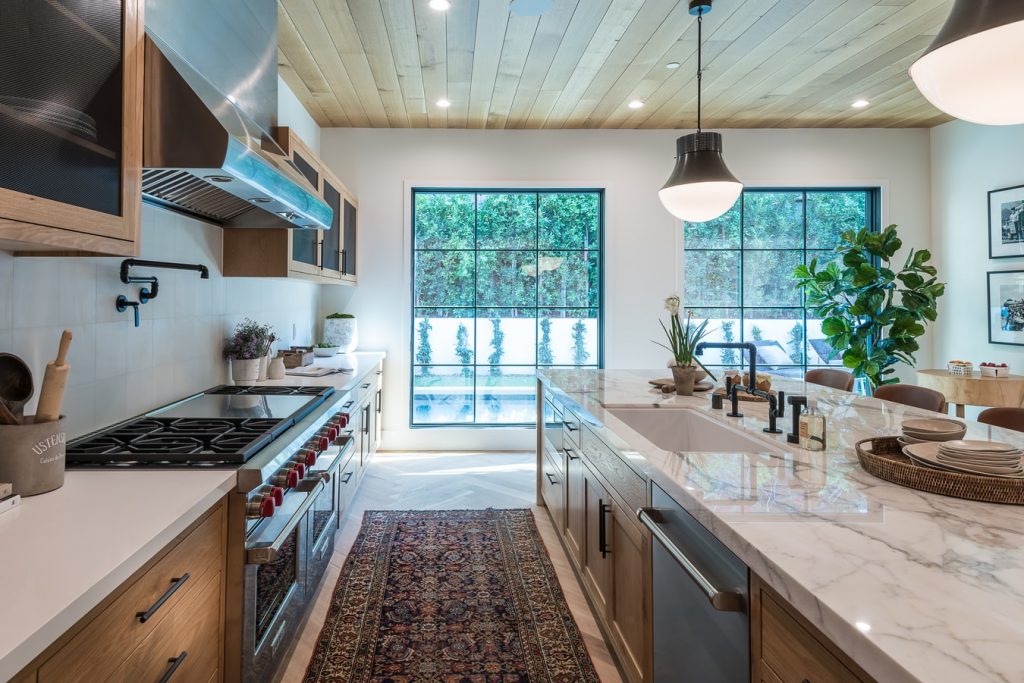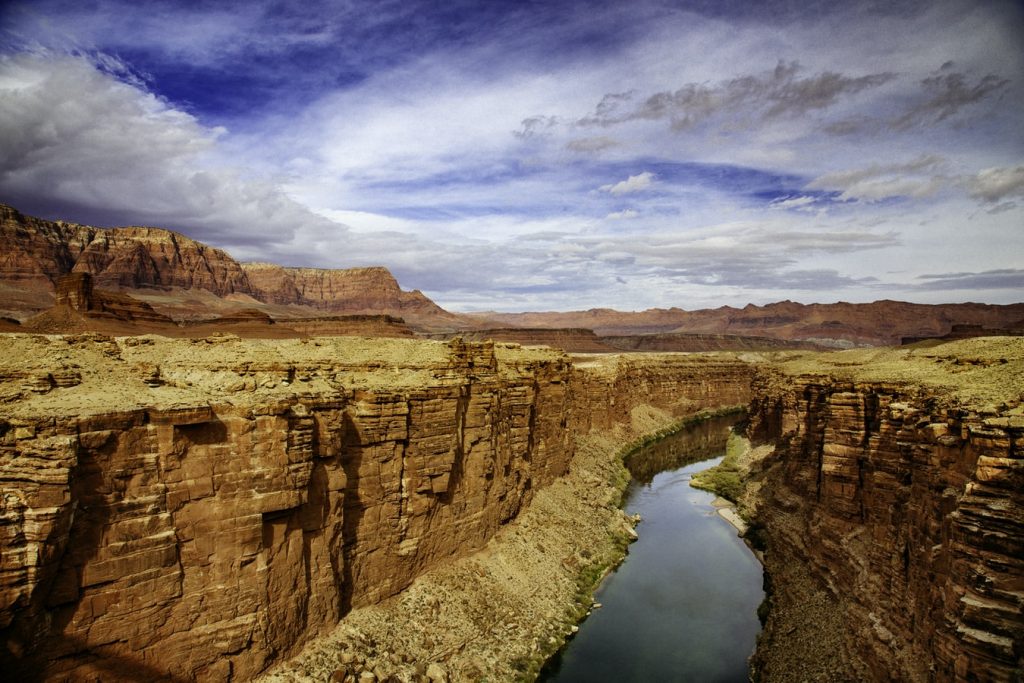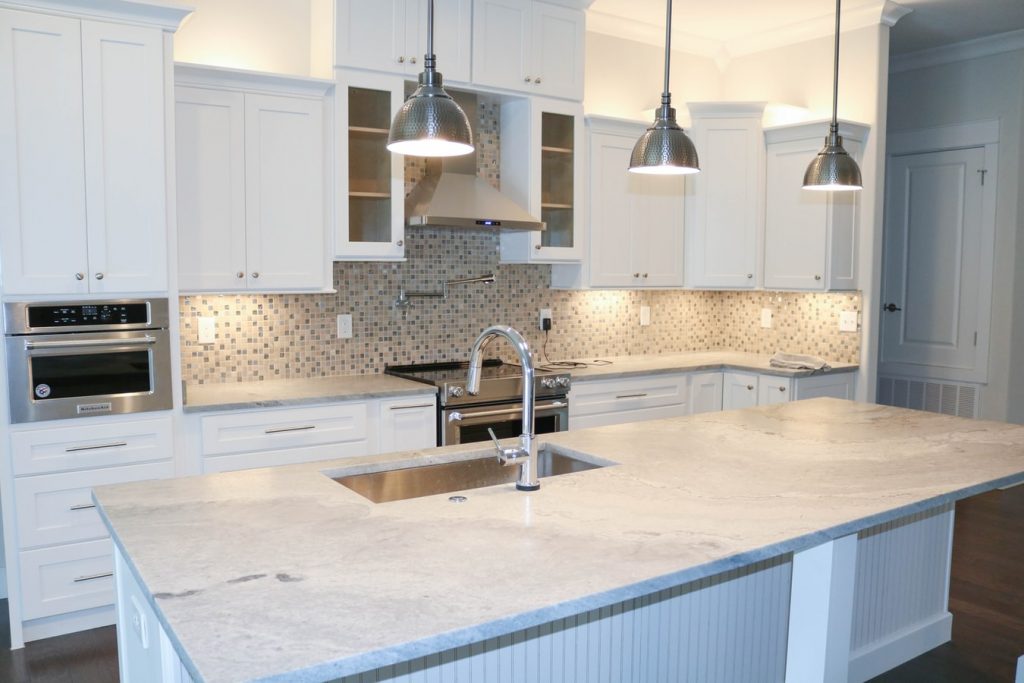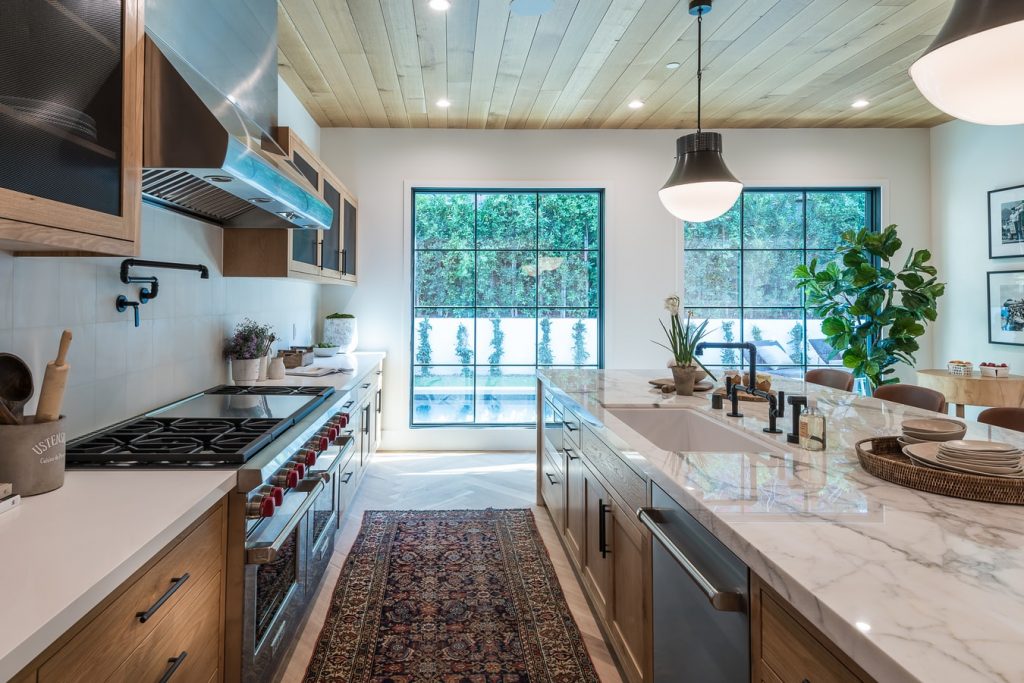Learn more about the main differences between marble and granite, suggestions of uses, the maintenance of each stone, and more.
Frequently, the various styles, colors, and types of marble and granite make it hard for the homeowners, designers, and builders to decide on which of the stones to use. Both of the stones add a sophisticated look to where they are used and are very unique in beauty, shades, and texture.
Despite being used for thousands of years, many doubts about them are common when choosing stones. Much more than for their beauty, the stones are commonly chosen for their durability and exclusivity. Though they are both natural stones, each one has its own attributes, such as looks, durability, hardness, and stain resistance. Because of that, to help with your choice, we will be listing the main aspects and differences between Marble vs Granite.
Granite
Granite is an igneous rock composed of many materials, such as quartz, feldspar and mica. The combination of these materials result in a granulated stone, found in many colors, including grey, black, brown, yellow, green, beige and red.
Some types of granite to choose from are:
- Lucy in the sky granite
- Black Titanium granite
- White Paradise granite
- Blue Bahia granite
One of the main pros in using granite is its resistance. The stone comes in at a 6 to 7 resistance on the Mohs scale, which means it is relatively hard.
It can tolerate high temperatures, so it is not a problem to set hot pans on top of it.
You can also use knives on top of it, since it does not scratch easily, and liquids and other materials that are spilled on it can be easily cleaned.Because of that, granite is recommended for both indoor and outdoor areas, and it is very commonly used in kitchen and bathroom countertops.

Marble
Marble, on the other hand, is a metamorphic rock, made out of limestone under extreme pressure and heat. It is mostly composed of calcite, a softer mineral. As a result, Marble is an elegant stone with a classical and subtle beauty, that can be found in colors that vary between pure white to black.
Some types of marble are:
- Super white marble
- Shadow storm marble
- Calacatta marble
- Montevitta marble
Because of its mineral composition, marble is a more porous stone, meaning it is more vulnerable to stain and corrosion.
Besides, marble has a low hardness, between 3 to 4 in the Mohs scale. Since marble is not as durable as granite, it will suffer more damage from heat, liquids and scratches.Therefore, marble is more suitable for indoor areas with less traffic, such as bathroom counters, fireplaces and more, walls and decorations.

Marble vs Granite: main differences
When choosing between marble and granite, it is important to consider some main aspects of both, such as:
Marble vs Granite: Origin and Composition
Granite originates from solidification of Magma within a period of millions of years. Because of its origin, the stone is labeled as an igneous rock. During the process of heating and cooling down, granite forms into a very hard rock. Its composition is essentially Feldspar and Quartz, which are both very hard materials.

In contrast, marble is a metamorphic stone originated by a transformation of another type of stone, called sedimentary stone. These stones are formed by the accumulation or deposition of mineral or organic particles at the Earth’s surface, followed by cementation. These rocks, under intense pressure, transform into marble, a smooth surface with a pattern similar to veins. So, basically, the Marble originates from limestone that transforms. It consists mainly of Calcium carbonate, which is softer than the components of granite.

Marble vs Granite: Costs
While stone countertops or cladding are certainly not the cheapest option, the looks and durability of the stone make it well worth the cost.
Granite is less expensive than marble, starting at around $75/square foot and more than $100/square foot for a more high end stone.
As of marble, the square foot starts at $100, and can go over $200.
The prices fluctuate a lot, so if you are considering getting any of these stones, you should ask for a quotation.
Marble vs Granite: Installation
When it comes to the installation of the stones, they are both very similar. First, you start with a template transferred to a slab of the stone, which is then cut out to fit and finished. Then, the slabs are set into place and secured with silicone adhesive. Holes for sinks and faucets should be cut, and these tasks should be done by professionals.

Marble vs Granite: Appearance
Granite and Marble have a slightly similar appearance. However, from up close, you can detect specific differences, such as natural colors from both stones and their patterns.
Granite color variations are usually identified as flecking throughout the stone. The flecking is mostly caused by Quartz crystals, so the higher the level of Quartz in the stone’s composition, the more flecking it will have.
The patterns on marble, on the other hand, look very similar to veins, and are made out of several minerals.
Granite’s colors go from light to dark, presented in flecks, veins or solid patterns. Marble is most commonly found in black or white, but it also comes in green, grey, blue, pink and several other colors.
While choosing your stone, you should keep in mind that appearance in both types varies between slabs depending on its natural source and cut location.
Marble vs Granite: Strength and Durability
The natural processes that form marble and granite are directly related to the overall resistance and durability of the stones.
Both materials will last and stay beautiful for several years at your home, but it’s important to choose the one that fits the purpose best, to ensure that damage will not occur.
Granite has a hardness of 6 to 7 on the Mohs scale. This stone is very resistant to scratches and heat damage, and therefore it is the ideal material for kitchen counters, both indoors and outdoors. Granite will also not discolour or corrode from everyday home activities, such as cleaning and cooking.
Marble has a hardness of 3 to 4 on the Mohs scale. It lacks the same strength as granite, and it will damage from everyday kitchen tasks, such as cutting. Contact with hot pans and dishes may cause some damage to the marble. As a surface, marble is a more suitable choice for low-traffic spots such as bathroom vanities, fireplace surrounds and decorative accents. It is important to know that some of these damages can be avoided by sealing.
Marble vs Granite: Stain Resistance
The specific metamorphic attributes of each stone results in different porosity levels.
The more porous a stone is, the more liquid it absorbs, so it makes it more likeable to stain.
The high porosity of marble will result in absorption of some materials upon contact. For example, some foods or liquids, such as tomato sauce, wine, juice, lemons and vinegar will absorb into marble and cause permanent staining.
The extreme density of granite makes it capable of resisting virtually all stains from foods and liquids. Even acidic liquids like vinegar will not permeate granite as long as you maintain an effective sealant barrier on the granite.
Marble vs Granite: Water absorption
As said before, granite has a much lower porosity compared to marble, and because of that, it absorbs way less water. That means it is safe to use in wet surfaces and environments, such as showers, bathrooms or kitchens, without suffering big damages.
In contrast, marble is sensitive to contact with water, and can demand some special care because of that. However, nowadays with the technological progress in stones, it is very common to use sealants to prevent damage from water and liquids on both stones.
Marble vs Granite: Maintenance and Repairs
Both marble and granite countertops require routine maintenance and upkeep.
With proper annual re-sealing, granite is very resistant to stains, though some high-traffic surfaces might need to be sealed every few months. Minor scratches or dings in granite can be filled in with color-matching epoxy or resin, but professional installers should repair larger cracks.
Marble countertops need to be resealed regularly, about every 6 months (or sooner, for high contact surfaces). Minor damage to marble can be repaired similarly to granite, and bigger problems also require professional help.

Marble vs Granite: Safe Cleaning
To clean sealed granite counters regularly all you have to do is use plain soapy water to keep the surfaces clean and beautiful, and rinse away the soap completely.
Marble surfaces require more careful cleaning to avoid damaging the porous stone. If you are cleaning a marble surface, you should use a cleaning product with neutral pH to avoid discoloring and corrosion of the marble. Do not use an abrasive cleanser on marble, because you could dull the finish.
Marble vs Granite: Suggestions of use
As exemplified before, each of the two stones have very specific properties, which makes them more or less suitable for each purpose.
Because of its resistance and durability, granite can be used in outdoor spaces, such as pools, outdoor kitchens, tables, flooring and bars. It is also recommended for wet places, like showers, sinks, kitchens and bathrooms, since it does not absorb water. You can also use granite in stairs, flooring, walls, fireplaces, and much more!
If you are willing to take the specific care that marble takes, you can use it for wet environments too, like kitchens and bathrooms. It is not recommended for outdoor purposes, because sun and weather exposure will most likely damage the stone, but you can use marble for indoor flooring, walls, fireplaces, stairs, tables and many other options!
Marble vs Granite in architecture
Both of the stones are very popular in architecture. There are important monuments and buildings made out of them.

The Supreme Court building , for example, was built between 1932 and 1935, using several different types of marble. Vermont marble was used extensively in the exterior. The inner courtyards were made using bright white marble from Georgia, and the interior corridors and entrance halls are made from marble from Alabama.

The Washington Monument was also built of marble between 1848 and 1884. It uses marble from Texas, Maryland, Sheffield, Massachusetts, and Baltimore, Maryland.

The most famous monument in granite is probably Mount Rushmore. It includes the faces of American Presidents George Washington, Thomas Jefferson, Abraham Lincoln, and Theodore Roosevelt. Although construction began in 1927, it took 14 years to carve this monument. 450,000 tons of rock was removed during the construction of this granite monument.
Marble vs Granite: Which one to choose?
In conclusion, the best choice of stone is the one that fits best the purpose you want it for!
You should consider the everyday uses of the stone, the exposure to different substances, how much you are willing to pay for it and the maintenance you are willing to give it.
To help you with the decision, we have summed up the different aspects to consider while choosing the best stone to use.
| Appearance | While they are both very beautiful stones, marble is usually preferred by designers for aesthetic purposes. |
| Resistance | Marble is more likely to get stained and damaged. If you are using the stone for a wet or high-traffic surface, it is more appropriate to use granite, but it is also possible to use marble. |
| Maintenance | Both stones require regular sealing, but, when using marble, it is suggested that you seal it more frequently. |
| Cleaning | Cleaning granite is very simple, since All you need is some soap and water. Cleaning marble is also not hard, although you should only use neutral products on it. |
| Cost | Granite is usually cheaper than Marble, but you should ask for a quotation on both, since the price floats. |
Regardless of which one you choose, both stones make absolutely beautiful countertops, wall cladding, flooring and more. To choose between them, you should basically consider the aesthetic you want and how much maintenance you are willing to give the stone.
We hope to have answered all your questions about the difference between Marble vs Granite!
If you need natural stones to decorate your home, count on TM for that! With us, you will find the best options of Marble and Granite, with a great price and quality!
Our mission is to fulfill our client’s dreams with great treatment, delivering high quality products, and offering a big range of options for our client’s choice, in the shortest possible time.
If you want to learn more about our options on marble, granite and other natural stones, check out our inventory here!
If you have any other questions, feel free to leave a comment!





